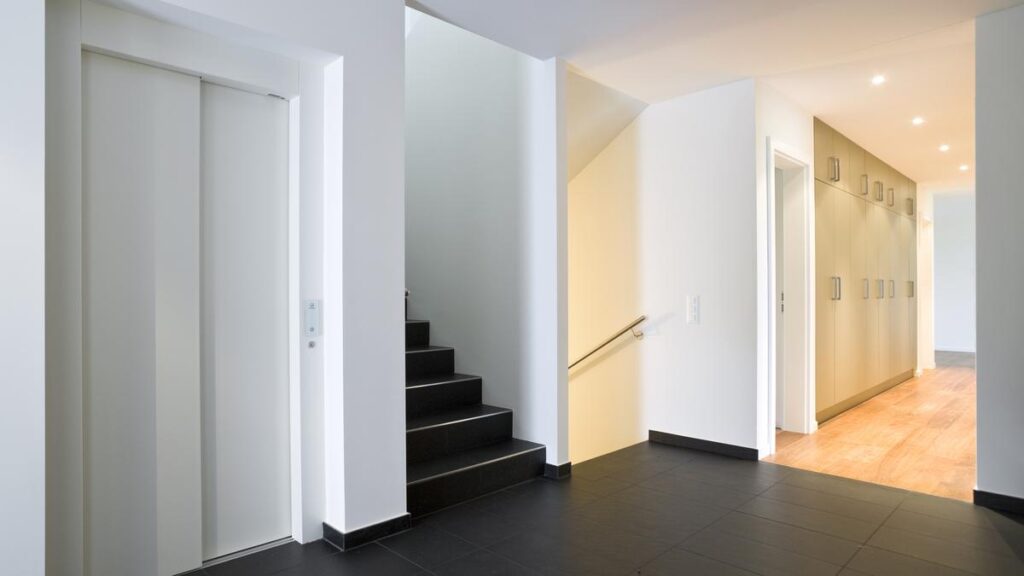The landscape of home décor in India is undergoing a remarkable transformation, fuelled by a surge in innovative ideas and a rapidly growing population and economy. As our homes adapt to the demands of contemporary living, technology within them is evolving at a rapid pace. Once considered a luxury, home lifts are now becoming increasingly commonplace, driven by shifting demographics, urbanisation trends, and technological advancements. The future of home lifts will be supported by innovations that will shape the development to the sustainability initiatives driving its design, and the challenges hindering its adoption.
Imagine a future where controlling your home lift is as easy as issuing voice commands or tapping on your smartphone, even when you’re miles away. The integration of home lifts with smart automation is inevitable, promising unparalleled convenience and connectivity. AI-powered features will optimise energy usage and tailor the user experience, while advanced safety protocols ensure peace of mind. Sustainable materials, modular designs, and energy-efficient technologies will further enhance their appeal, while self-repairing mechanisms streamline installation and maintenance processes.
One of the significant developments in the 21st century is humanity embracing sustainability, and the home lifts industry is not far behind. Energy-efficient systems, regenerative drives, and eco-conscious materials are driving innovation. These solutions not only reduce carbon footprints but also resonate with environmentally conscious consumers. From regenerative braking systems to solar power integration and recycled materials, home lifts are adapting to meet the demands of eco-friendly living. Incorporating such eco-friendly features into modern building design will enhance the quality of life and well-being of the residents.

There is a huge onus on following the regulations thereby ensuring the way we live and survive in our residential environment. Regulations are evolving to ensure the safety, accessibility, and integration of home lifts within smart home ecosystems. Uniform national standards, stricter safety protocol, streamlined permitting processes, standardised installation guidelines, qualified technicians and professionals, mandatory periodic inspections and standardised maintenance protocols are being implemented to ensure consistent quality and safety nationwide. Collaboration between government bodies, industry players, and consumers is crucial for responsible development and addressing emerging challenges. Through regular assessment methods, the regulatory framework could be flexible enough to accommodate emerging technologies and innovative designs that could aid in the growth of the home lifts industry.
Ask before you buy
What type is suitable for my needs and what are the installation requirements?
What safety features does it offer, and what is the weight capacity?
Is it customisable, and what are the maintenance and service plans?
What is the warranty coverage, and are there any ongoing operational costs associated with the lift?
Can it be relocated or removed if needed, and can I see references or testimonials from previous customers?
What is the price range in which they are available?
Where do we access the information pertaining to home lifts?
How many floors can it travel, and will it require a lot of civil work?
Is frequent maintenance required, and is it future-proof or upgradable?
Despite the promise of home lifts, challenges such as high initial costs, space constraints, and varying regulations persist. However, government initiatives, technological advancements, and public awareness campaigns are helping overcome these obstacles, making home lifts more accessible and appealing to a wider audience. Some home lifts manufacturing companies have initiated EMI options to ease the buying of home lifts.

Homeowners can prepare for the installation of home lifts by identifying suitable locations, consulting structural engineers, understanding electrical and plumbing requirements, researching different lift options, and exploring financing options. Staying informed about technological advancements and regulatory updates, networking with professionals, and organising documentation are essential steps in the preparation process.
Some brands in the market are Nibav Lifts, Elite Elevators, Cibes Lifts, Stitlz Elevator, PVE, and DomusLift. The growing demand for senior living solutions for India’s ageing population is a key driver for home elevators. Also, a growing middle class with increasing disposable income is more likely to invest in home improvement projects like elevators to enhance convenience and comfort. Space constraints in urban dwellings and multi-storied independent homes are driving the demand for space-saving and efficient home elevator options. People with mobility limitations look for elevators even in small projects. Elevators in luxury communities enable enjoying every floor with ease. Multi certified home lifts ensure added safety. EMI schemes are also made available by companies to make home lifts affordable for all.

For reliable information on the latest developments in home lift technology, homeowners can turn to industry associations, trade shows, news outlets, and consultations with professionals. Government websites and regulatory bodies also provide valuable insights into safety standards and compliance requirements.
The certified home lifts are available in the price range of ₹10 lakh to ₹1 crore and have a lifespan of over 20 years. Furthermore, through zero cost EMI schemes, now consumers also have access to enhanced mobility, convenience, and safety within their homes at no extra cost. The future of home lifts is promising, with innovations driving connectivity, sustainability, and accessibility. While challenges persist, proactive measures and collaborative efforts are paving the way for a future where home lifts are not just a convenience but an integral part of modern living spaces. With a commitment to excellence and sustainability, home lifts are set to redefine the way we experience mobility within our homes.
The writer is CEO & Founder, Nibav Home Lifts.
Source Homevior.in




